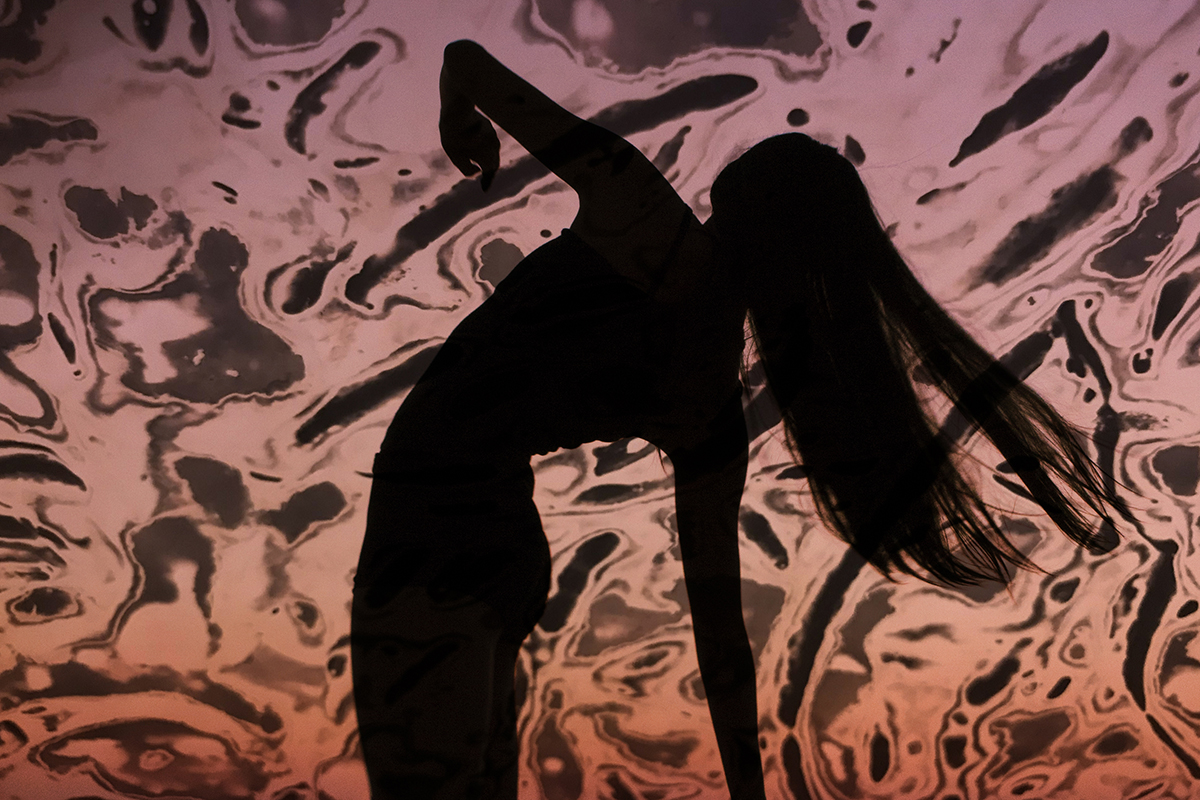Students Behind the Lens: Caroline Bert
Blending her love of dance and photography, Caroline Bert uses the Tamron SP 45mm F/1.8 VC lens and a camera-less process called Chemigrams to create unique experimental images.
By Jenn Gidman
Images by Caroline Bert
A dual passion has always driven Caroline Bert: dancing and photography. "I grew up dancing, and when I got to college, I started out as a double major in both dance and photography," she says. "As I shifted more toward photography, I still wanted to incorporate dance somehow, so I started taking pictures of dancers, seeking out their emotions, expressions, and fluidity of form that would make for compelling photographs."
Caroline finished her BFA at LIU Post on Long Island and is now going for her MFA there, but in between the two programs, she came across an opportunity she couldn't turn down to develop her photography career. "My professor had heard of a customer service opening at Tamron USA and recommended it to me," she says. "I was excited at the chance to apply, because I'd get to be around other photographers and others who enjoy photography. I'd also be able to work my school schedule around my job, which is obviously important to me."
She got the job, and so now, through both her 9-to-5 and her schoolwork, Caroline is almost always immersed in photography—and even when she has free time, she still finds herself behind the camera or in the darkroom. "I definitely think it's possible to work full time and still be able to carve out creative time, especially if you love your art," she says. "If I'm working until 5 p.m., then from 6 at night until about 1 a.m. is my time to be creative. Even if it's just a 45-minute break, I'll do what I can. I usually head to class after work a couple of nights a week, and when I don't have class, I work independently in the studio. On the weekends, I'm usually at the school even if I don't have to be. I love what I do."
Drawn to the history of photography, Caroline cites such pioneers as British botanist/photographer Anna Atkins as inspirations, but her true mentor is an LIU professor who's been with her through her BFA and now during her MFA. "She's at every show," Caroline says. "If I have an idea, she's always more than supportive in helping me achieve my vision, no matter how crazy it may seem at first. She helps make it all possible for me, going above and beyond what instructors usually do. It's also terrific to have a professor who's a showing artist—she practices what she preaches."
Although she's tried her hand at different styles during her studies, Caroline's favorite genre is experimental photography—especially when it comes to combining darkroom techniques with digital. "When I'm in the darkroom, I like to be hands-on, and I also like to make installations out of my work so I treat the pieces as objects, rather than just pictures on the wall," she says. "I like to think nontraditionally when it comes to both creation and presentation, to make it more of an experience rather than something you just stroll past. I see my style as being expressive and emotional. I feel a sense of freedom when I'm making my work, and I feel a sense of freedom when I'm looking at it, and that's what I'm trying to convey to the viewer as well."
Caroline's first Tamron purchase was the first version of the 15-30mm wide-angle lens. "I loved the 15-30, but I really wanted to use a fixed lens," she says. "And so I tried the SP 45mm F/1.8 VC lens, which quickly became my favorite. The camera-less process I use in the darkroom, called Chemigrams, features very organic shapes, and I need a crisp, clean look to make them stand out. For this type of work, zoom lenses tend to flatten the image. The 45mm lens does exactly what I need it to do to achieve the effect I'm going for."
The images shown here using the Chemigrams process was for a personal project that Caroline presented at a shared show in the fall at LIU. "My subjects were dancers from the studio I grew up in," she says. "The senior company of girls met me at a local beach club, where we did a photo shoot from the golden hour until it got dark. There were some distractions, like grass and other people, but I got down to a lower angle, using the sky as a backdrop, so that the dancers could appear elevated, almost like they were weightless forms."
Because she knows the dancers personally, Caroline crafted their poses based on each dancer's strengths. "Some of them are terrific at jumps, for example, so that's what I asked those individual dancers to do in front of my camera," she says. "I wanted them to be comfortable, first and foremost, so I'd ask them to do the moves they felt like doing. Overall, though, I was going for a carefree look in these images, and I hope that's what comes across."
A couple of days after graduation, Caroline learned the camera-less Chemigrams process—one in which different objects are used to create positive or negative images on light-sensitive paper—that now informs her work. "We were prepping for our graduation party when my professor (that mentor I mentioned) said she wanted to eventually teach this process; she wanted to know if I felt like learning it from her first," Caroline says. "Of course I said yes. I was immediately drawn to it, because it's the exact opposite of how I usually work. I'm typically a by-the-rules artist. Now I'm the only photography major at LIU Post I know of who's doing camera-less work like this, in addition to the work I'm doing with my camera."
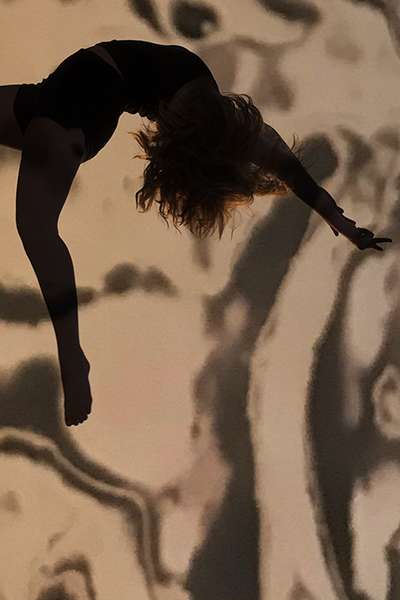
45mm, F/5.6, 1/1600 sec., ISO 100
Click image to view larger
Caroline explains the process, which involves taking the light-sensitive paper and applying a resist (a material that creates a patterned coating). "I'll often use household products: honey, oil, whatever other items I can find that work well," she says. "It's almost like painting with light, but with the resists instead. Then I'll cross-contaminate, alternating placing the paper in the developer and the fixer; through those repetitive actions, the rings you see are formed on the paper."
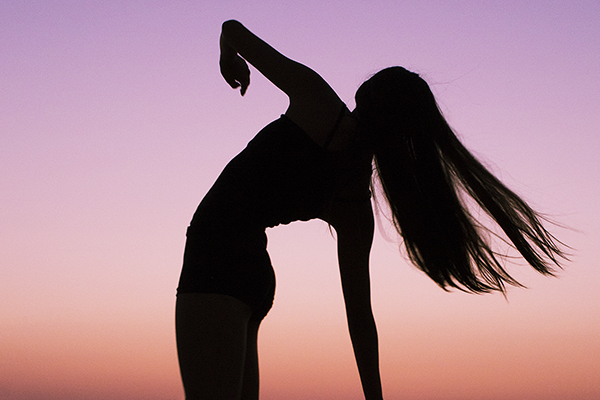
45mm, F/11, 1/60 sec., ISO 3200
Click image to view larger
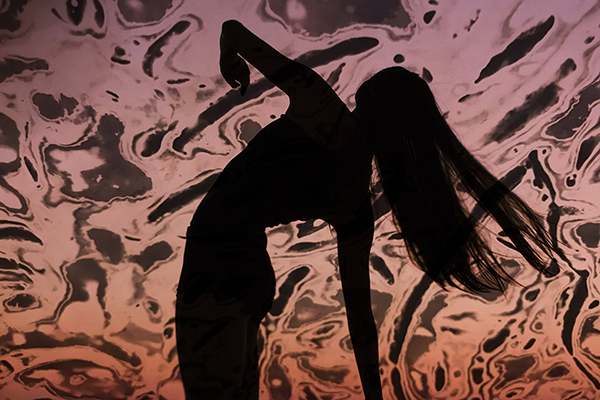
45mm, F/11, 1/60 sec., ISO 3200
Click image to view larger
When the paper is just the way Caroline wants it, she'll wash it off, then fix it so it's no longer light-sensitive. Then she'll scan her pieces into the computer and layer them with the digital images of her dancers in Photoshop. "I'll usually scan the Chemigram pieces at 1600 dpi, so I can really place the figure in a way so that it interacts with the forms," she says. "I play with the forms in different ways, and once I find a way that appeals to me, I just go with it."
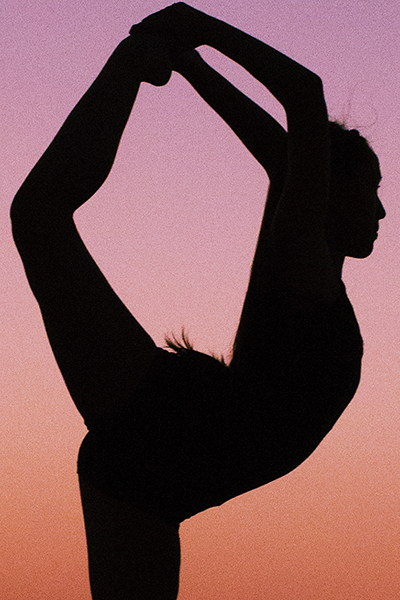
45mm, F/8, 1/250 sec., ISO 6400
Click image to view larger
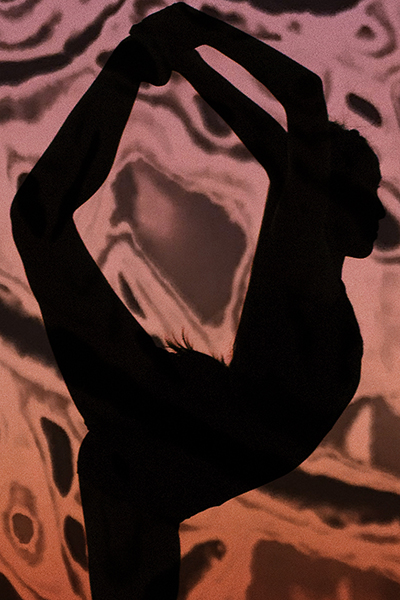
45mm, F/8, 1/250 sec., ISO 6400
Click image to view larger
For Caroline, the most challenging part of photography has been overthinking her work. "You never know what a project is going to be until you're right in the middle of it, and even then you don't fully know how it will turn out until you're done—and it's never really done," she says. "You sometimes have to allow yourself to turn your camera on and your brain off, to let it be instinctual."
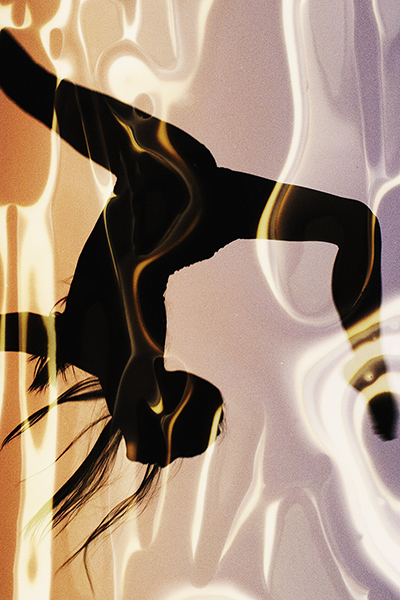
45mm, F/8, 1/250 sec., ISO 6400
Click image to view larger
After she completes her MFA, Caroline hopes to combine the experience she's gained at both school and through her job at Tamron to share her passion with others as a photography instructor. "If I teach photography, I believe I'll continue to be inspired, all while I'm hopefully inspiring others," she says.
Caroline's advice for other up-and-coming student photographers: "Find something that excites you, then obsess over it. Take your work in every direction possible."
To see more of Caroline Bert's work, check out her Instagram.
